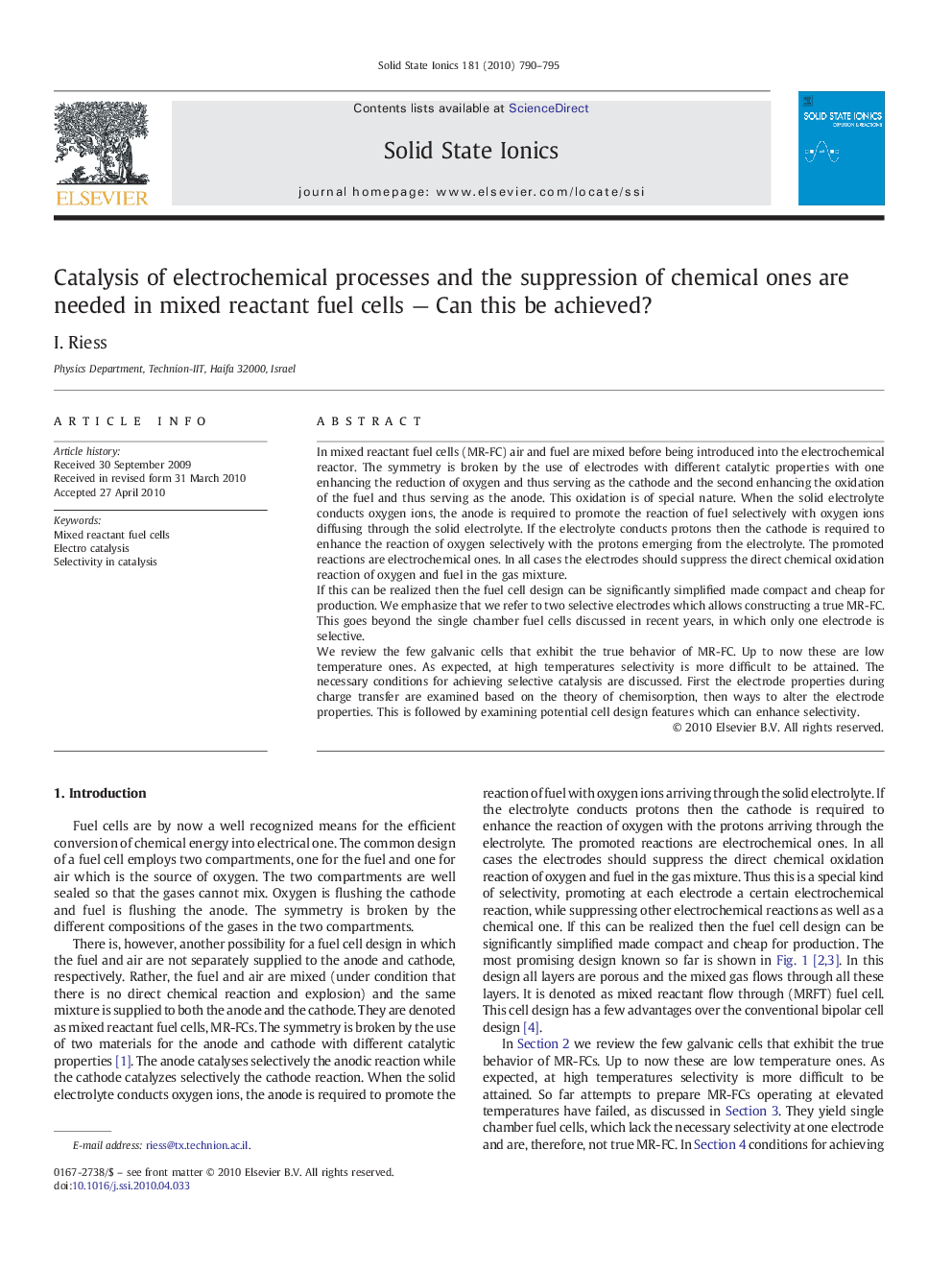| Article ID | Journal | Published Year | Pages | File Type |
|---|---|---|---|---|
| 1296634 | Solid State Ionics | 2010 | 6 Pages |
In mixed reactant fuel cells (MR-FC) air and fuel are mixed before being introduced into the electrochemical reactor. The symmetry is broken by the use of electrodes with different catalytic properties with one enhancing the reduction of oxygen and thus serving as the cathode and the second enhancing the oxidation of the fuel and thus serving as the anode. This oxidation is of special nature. When the solid electrolyte conducts oxygen ions, the anode is required to promote the reaction of fuel selectively with oxygen ions diffusing through the solid electrolyte. If the electrolyte conducts protons then the cathode is required to enhance the reaction of oxygen selectively with the protons emerging from the electrolyte. The promoted reactions are electrochemical ones. In all cases the electrodes should suppress the direct chemical oxidation reaction of oxygen and fuel in the gas mixture.If this can be realized then the fuel cell design can be significantly simplified made compact and cheap for production. We emphasize that we refer to two selective electrodes which allows constructing a true MR-FC. This goes beyond the single chamber fuel cells discussed in recent years, in which only one electrode is selective.We review the few galvanic cells that exhibit the true behavior of MR-FC. Up to now these are low temperature ones. As expected, at high temperatures selectivity is more difficult to be attained. The necessary conditions for achieving selective catalysis are discussed. First the electrode properties during charge transfer are examined based on the theory of chemisorption, then ways to alter the electrode properties. This is followed by examining potential cell design features which can enhance selectivity.
